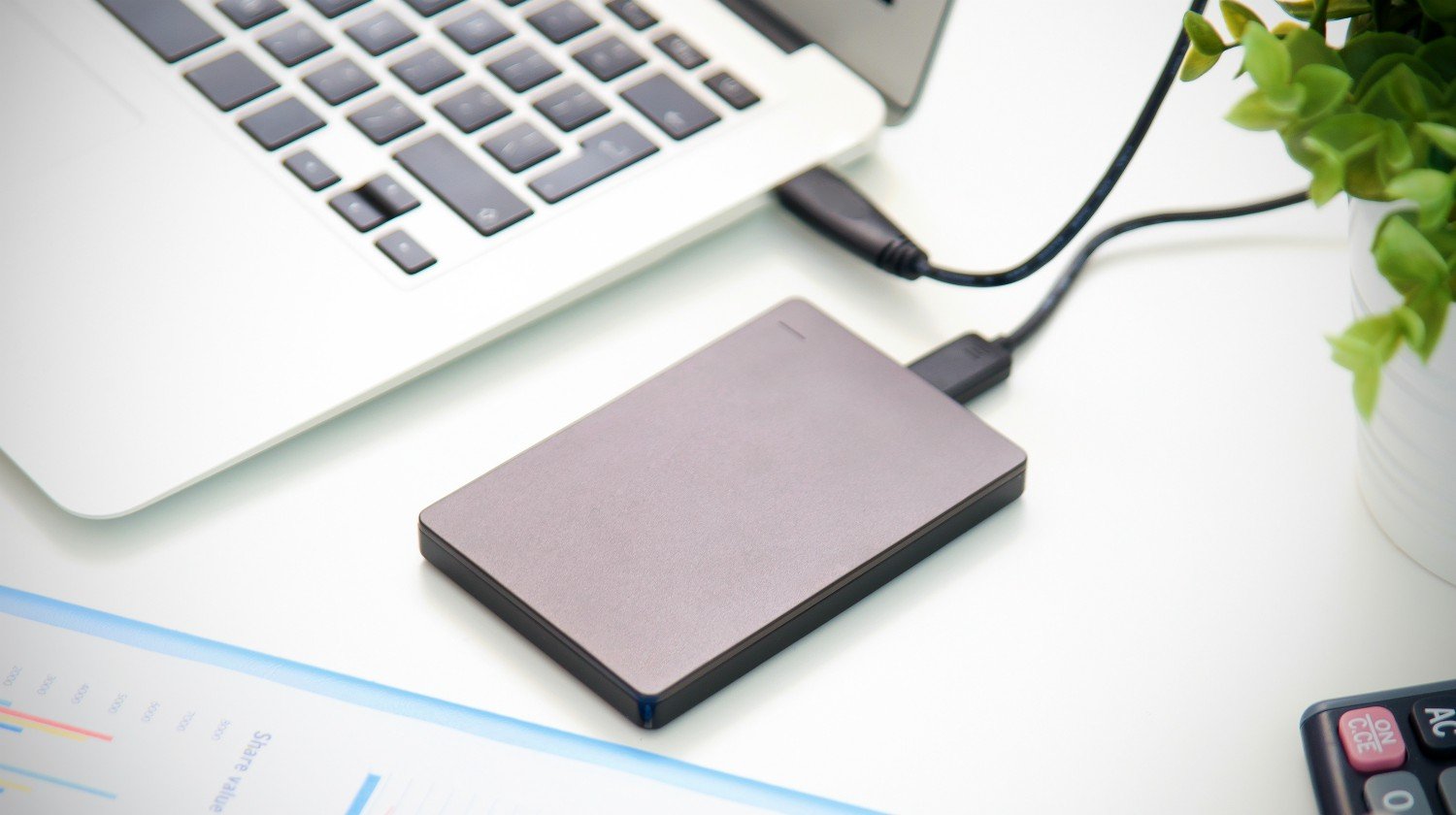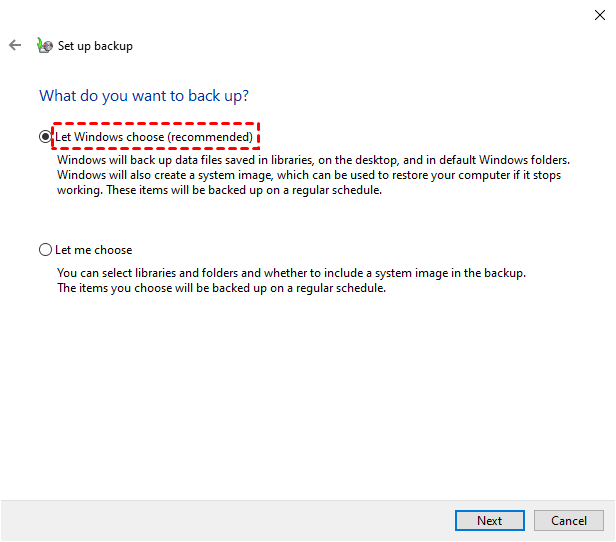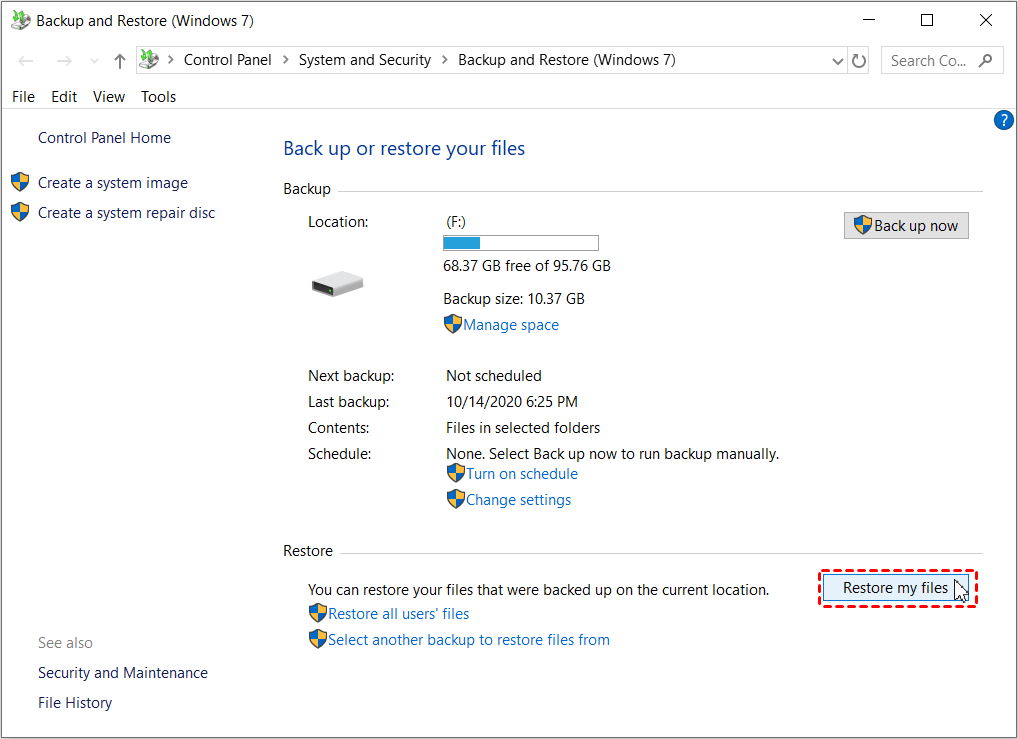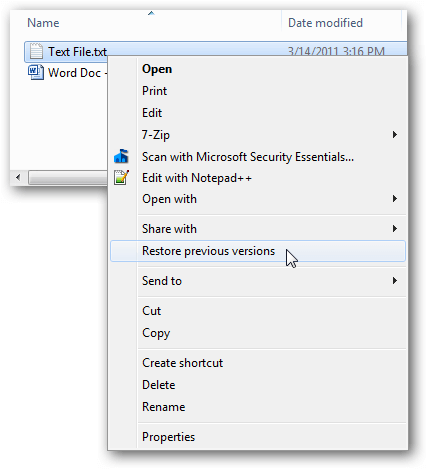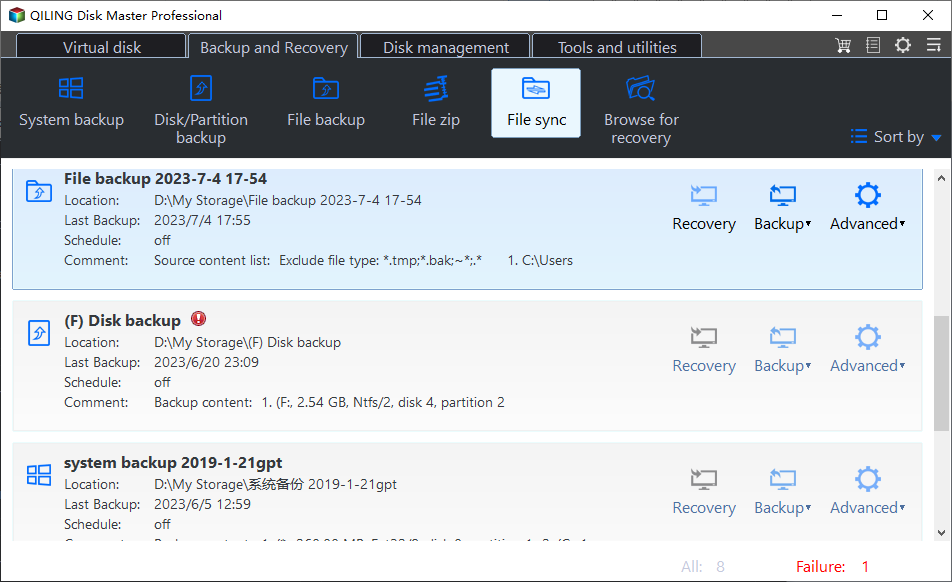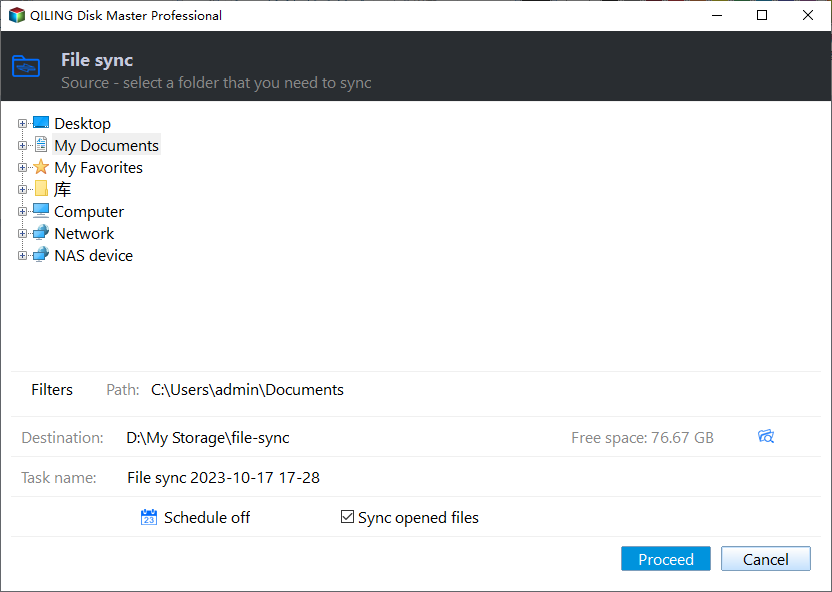Automatically Backup Files to External Drive | 4 Free Ways
- Why need to automatically backup files to external hard drive?
- How to automatically backup folders/files to an external hard drive
- Way 1: Automatic backup files to external drive with Backup and Restore
- Way 2: Automatically backup files to external hard drive with File History
- Way 3: Backup files to external hard drive automatically with Qiling Disk Master🔥
- Way 4: Automatically copy files to external hard drive in another manner with Qiling Disk Master🔥
- Summary
Why need to automatically backup files to external hard drive?
How long has it been since you last backed up your essential computer files? Was it three months ago, after a friend's panic-stricken call about losing their thesis due to a computer crash? Or perhaps it's even longer? You're aware of the significance of system backups, but it's also crucial to remember to back up individual files, especially those precious documents, office files, and irreplaceable photos, which can't be easily replaced. Don't wait until it's too late; take action today to safeguard your valuable data!
Computer failures, hardware conflicts, hard drive damage, and hacker invasions are inevitable. It's not a question of if, but when these problems will occur. To safeguard your data, it's essential to have a backup plan in place. One option is to back up files to an internal hard drive, but for added protection, consider using an external hard drive or similar storage device. This approach can help prevent data loss in the event of system disk failure or a complete system meltdown.
The importance of backup cannot be overstated, but let's face it - we're all busy with work, family, friends, and other responsibilities. Remembering to back up our files after each modification can be a daunting task, but with the help of a schedule or automated task, it becomes a breeze. By automating the backup process, you'll save time, effort, and prevent data loss, all while safeguarding your precious memories.
How to automatically backup folders/files to an external hard drive
Windows offers several built-in backup utilities, including Backup and Restore and File History, which enable automatic backups to an external hard drive. Additionally, there are numerous third-party software options, such as Qiling Disk Master Standard, that can also be used for scheduling backups. To make an informed decision, it's recommended to compare the features and capabilities of each option, considering factors such as ease of use, customization options, and data protection features, before selecting the one that best meets your needs.
- Backup and Restore The Windows Backup and Restore utility is capable of backing up files stored in libraries, on the desktop, and in default Windows folders. It also allows users to decide whether to include a system image in the backup task. Furthermore, users can select specific files or partitions on the disk to be backed up. The utility supports scheduling backups on a daily, weekly, or monthly basis.
- File History The Windows Backup feature is designed to backup files or folders in the user folder, where you can add specific files or folders to be backed up beforehand. In Windows 10, users can directly add folders to be backed up, allowing for more targeted backups. The feature supports a range of backup schedules, from every 10 minutes to daily, and also allows for saving multiple backup versions, with options ranging from 1 month to forever.
- Qiling Disk Master This all-in-one backup software allows you to backup a wide range of data, including files, partitions, systems, disks, and even create a cloud backup. You can select specific files to backup from various sources, such as local disks, external disks, USB drives, network paths, and cloud drives. The software also offers flexible scheduling options, including daily, weekly, and monthly backups, as well as �ncremental backups and adjustable compression levels.incremental backups and adjustable compression levels.
With the variety of backup tools available, you can now select one that suits your needs and embark on a journey to automatically backing up your files. This convenient solution ensures your important data is protected and secure.
Way 1: Automatic backup files to external drive with Backup and Restore
Step 1. To begin, connect your external drive and verify that it's being detected. Next, search for "backup settings" and select it. Within the search results, choose "Go to Backup and Restore (Windows 7)" under the "Looking for an older backup option" section.
Step 2. In the Backup and Restore (Windows 7) window, click on "Set up backup" and select your external hard drive as the destination. You then have the option to choose what to backup: either let Windows decide, which is a more straightforward approach, or let me choose, which provides more flexibility. With the latter option, you can select specific items to backup, such as files, folders, partitions, or even your entire system.
Step 3. Next, you'll be prompted to confirm your backup selection. You'll also see that the default schedule backup is set to 7:00 PM every Sunday. If you'd like to change this schedule, simply click on "Change schedule" to modify the settings. Once you're satisfied with your choices, click "Save settings and run backup" to initiate the backup process.
If something unexpected occurs, you can restore your files from backup using the "Restore my files" option. If your backup is stored on a different computer, you can select "Select another backup to restore files from" to access it. This feature allows you to recover your important files from a previous backup.
Way 2: Automatically backup files to external hard drive with File History
Step 1. To use an external hard drive for backups, ensure it is recognized by your system. Then, go to the Backup settings window and click on the "Add a drive" option under the "Back up using File History" section. From there, select the external hard drive to use for your backups.
Step 2. You will notice that the "Automatically back up my files" option is already enabled. To customize your backup settings, click on the "More options" link, where you can set the backup interval and determine how long to retain your backups.
The default backup settings are set to hourly backups and forever retention. However, you can adjust these settings to suit your needs, choosing from a range of backup intervals (every 10 minutes to daily) and retention periods (1 month to forever).
Step 3. Scroll down and take a look at the selected folders. Then, you can add, remove or exclude specific folders.
- To customize the backup settings, navigate to the "Back up these folders" or "Exclude these folders" section and select the "Add a folder" option to include or exclude specific folders from the backup process.
- To exclude a specific folder from the backup, select the folder you want to remove from the backup process and click the "Remove" option to delete it from the list.
Step 4. Go back to the top location and click Back up now.
You already have a file history backup, which allows you to easily restore files when needed. To do this, simply right-click on a file or folder and select the "Restore previous versions" option. From there, you can choose a backup version and click "Restore" to retrieve your data.
Way 3: Backup files to external hard drive automatically with Qiling Disk Master🔥
Step 1. First, ensure that the external disk is recognized. Next, download, install, and launch Qiling Disk Master Standard. To proceed, select the "Backup" and "File Backup" options in that order.
Step 2. Click Files or Folders to browse the files/folders you want to automatically backup to external drive.
Step 3. Select the external hard disk as the destination path.
Step 4. After selecting the destination, click the "Schedule Backup" option, which will reveal several scheduling options. Choose from daily, weekly, or monthly backups to suit your needs.
You can also use the following features:
- Event triggers. This feature enables you to schedule file backups to occur at specific events, including system shutdown or user logon.
- USB plug in. This feature allows for automatic file backup to or from a USB drive as soon as it is detected.
- Scheduled differential backup. The �rofessional version and above of this software includes the capability to only backup changed files since the last full backup, streamlining the backup process.professional version and above of this software includes the capability to only backup changed files since the last full backup, streamlining the backup process.
- Wake the computer to run scheduled tasks. The software can wake your computer 2 minutes before the scheduled backup time, allowing for automatic execution without human intervention, particularly useful for off-peak hour backups.
Step 5. Click Proceed after your confirmation. The selected files and folders will be backed up on a regular basis.
Tips:
- In addition to backing up to an external drive, this software also allows you to store your backups on Qiling Cloud, a cloud storage service that offers 1TB of free storage and 15 days of free access after registration.
- To restore files from a backup, navigate to the "Restore" section, select the desired backup image and choose the specific items you want to restore, then specify the restore path and click "Proceed" to initiate the restoration process.
Way 4: Automatically copy files to external hard drive in another manner with Qiling Disk Master🔥
Backing up files involves creating an image of specific files, which can be restored to their original form when needed. In contrast, syncing files to an external hard drive creates an exact copy that can be used directly without the need for restoration.
To get started, navigate to the "Basic Sync" feature in Qiling Disk Master, which allows you to automatically sync files to an external hard drive.
Step 1. Launch Qiling Disk Master Standard, and go to Sync > Basic Sync this time.
Tip: Upgrading to higher editions of Qiling Disk Master unlocks additional sync methods, including �eal-Time Sync for frequently updated files, Mirror Sync for an exact copy of the source directory, and Two-Way Sync for syncing changes on both sides.Real-Time Sync for frequently updated files, Mirror Sync for an exact copy of the source directory, and Two-Way Sync for syncing changes on both sides.
Step 2. Click Folder and then This PC or Computer to add the items you want to back up.
Step 3. Select the external disk as the target path.
Step 4. Click Schedule Sync to set auto-run task.
Step 5. Click Proceed to save settings or run file sync.
Notes:
- Be sure not to change the source folder name, as this will prevent the sync task from syncing future changes. or Do not change the source folder name, or the sync task will not sync changes made later.
- By default, basic sync does not sync deleted files. To enable this feature, you need to go to the Options. or Basic sync does not sync deleted files by default.
Summary
Backing up files to an external hard drive for the first time may take a little extra time, but it's a worthwhile investment. The time saved by not having to rebuild lost files or memories is immeasurable.
Regardless of the method you choose, the top priority is to ensure the safety of your data. Qiling Disk Master offers a wide range of features beyond just file backup, including selective file restore, disk clone, and creating bootable media. To experience the full capabilities of this tool, be sure to try it out. or No matter which method you select, the most critical aspect is protecting your data.
Related Articles
- Set Up Automatic Backup Windows 10 to External Hard Drive
- Easily Backup Files to External Hard Drive in Windows 11, 10, 8, 7
- Create Schedule Automatic Backup in Windows 10 [3 Ways Included]
- Easily Clone Raspberry Pi SD Card to Larger Card in Windows 10
How to clone Raspberry Pi SD card to larger card or smaller card in Windows 10 easily, as a backup or for card replacement? Get the stepwise guide here now!
